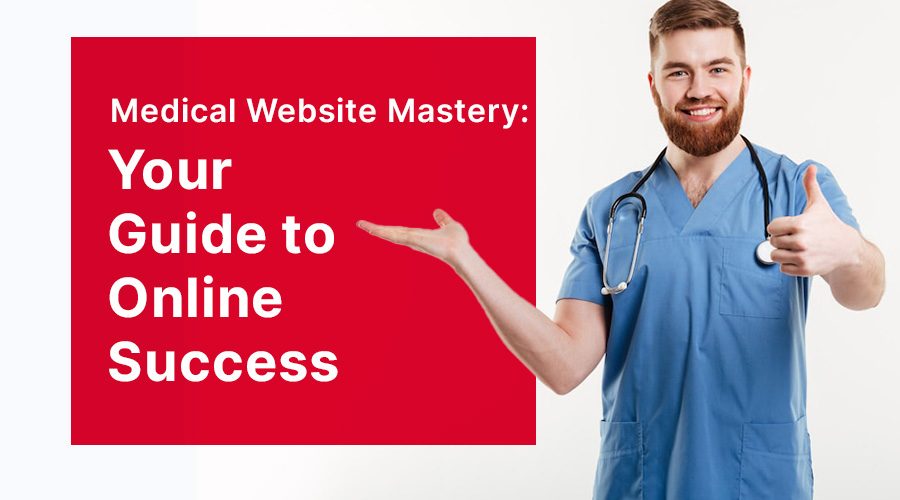Introduction
Just like a heartbeat gives signs of life, an online presence for medical practices is the pulse of modern healthcare. Why? Because in the age of technology, it’s our digital footprint that often forms the first impression. So, how can you ensure that your medical website pulses with vitality, magnetically attracting patients and converting clicks into appointments? Let’s dive into the journey of Medical Website Mastery to figure out.
Table of Contents
- Understanding the Patient’s Journey Online
- The Key Elements of a Successful Medical Website
- Ensuring Your Website is Mobile-Friendly
- The Role of SEO in Your Medical Website
- The Importance of Analytics and Continuous Improvement
Understanding the Patient’s Journey Online
Imagine you’re a patient. You’re looking for a new healthcare provider, or perhaps you’re just seeking some health advice. Where do you turn? Your first port of call would likely be the internet. Whether it’s through social media, search engines, or online reviews, your journey begins in the digital realm. This is a journey taken by millions each day, and your website should be a beacon of trust and knowledge guiding them. Now, think about your website. Does it cater to your patients’ needs at each stage of this journey? If you’re unsure, it’s time to map out the patient journey, from awareness to decision, and align your website accordingly.
Continuing this narrative, consider the questions your patients might have when they land on your website. Are they looking for a specific service? Do they need to book an appointment? Are they seeking more knowledge about a certain health issue? Your website should not only answer these questions but also provide a smooth, intuitive experience. Remember, the journey your patient takes online will often translate to the one they take offline.
The Key Elements of a Successful Medical Website
What makes a successful medical website? Is it a fancy design? High-end images? Well, while these elements might add aesthetic appeal, the true ingredients of success are somewhat less glamorous. In fact, they’re downright simple: clarity, accessibility, and relevance.
Firstly, ensure your website is clear and concise. Patients aren’t visiting your site for a literary experience – they want information, and they want it quickly. Use plain language, avoid jargon, and keep your messaging straightforward. Secondly, accessibility is paramount. Can your website be navigated easily? Is it accessible for those with disabilities? Finally, relevance. Keep your content up-to-date and relevant to your patients’ needs. This could be updating your services, sharing health news, or providing health advice. After all, what good is a website if it doesn’t speak directly to the needs of its audience?
Ensuring Your Website is Mobile-Friendly
Did you know that more than half of all global web traffic comes from mobile devices? It’s a small device with a huge impact. The mobile compatibility of your website is no longer a ‘nice-to-have’ – it’s a ‘must-have’. If your website isn’t mobile-friendly, you’re likely turning away a substantial number of potential patients.
Mobile-friendly design doesn’t just mean shrinking your website to fit a smaller screen. It’s about understanding the mobile user’s experience and optimizing your website to suit their needs. This might include larger buttons for smaller screens, quicker load times, or simpler navigation. Remember, a frustrated user is likely to bounce off your site and onto a competitor’s.
The Role of SEO in Your Medical Website
SEO, or Search Engine Optimization, is like the beacon guiding patients to your website in the vast sea of the internet. But how does it work? And more importantly, how can you make it work for you?
SEO is the practice of optimizing your website so that it ranks higher in search engine results. This can involve various strategies, from keyword optimization to improving site speed. By optimizing your website for search engines, you increase your visibility, drive more traffic to your site, and ultimately, gain more patients. But remember, SEO isn’t a one-time activity – it requires continuous effort and monitoring. Are you ready to set your beacon ablaze?
The Importance of Analytics and Continuous Improvement
Every journey involves some wrong turns, and your journey to medical website mastery is no different. The key is to learn from these mistakes, and that’s where analytics come in. Tools like Google Analytics can provide insights into how your website is performing, highlighting areas for improvement.
What pages are most popular? Where are your users coming from? How long do they stay on your site? These are all questions analytics can answer, guiding your continuous improvement efforts. In this digital age, change is the only constant, and your website must continually evolve to meet the changing needs of your patients.
Conclusion
Your medical website is more than just a digital presence. It’s a patient resource, a provider of trust, and an integral part of the patient’s healthcare journey. It’s not just about creating a website, but mastering it, and we hope this guide has shed some light on how you can do just that.
Remember, at Webnobby, we’re experts in creating dynamic, user-friendly, and SEO-optimized medical websites. Don’t just take our word for it, though – let us guide your online success story. Ready to set your pulse racing?


